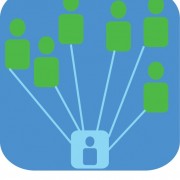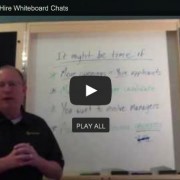How to Write a Job Description
Indeed.com, just one of many jobs sites, is home to more than 16 million job postings. How can yours stand out? How can you avoid underqualified applicants? Most importantly, how can you persuade the best candidates to apply to your company?
The answers to all of these questions begin with your job description. That small post of just a few hundred words has to do some heavy lifting. Your job description must be optimized for search algorithms. It must be clear and honest to help candidates self-qualify. Your job ad has to subtly communicate the awesomeness of your company to a small pool of coveted, well-qualified candidates.
Your job description must accomplish all these goals for one purpose: to convert only the best job seekers into a manageable pool of applicants. How can you write a job description packed with that much power?
Job Description Writing Guide
When thinking about how to write a job description, there are two things to keep in mind. First, you’re writing for the search engines. Second, you’re writing for the job candidates. Each of these “audiences” requires a different approach.
Search engine writing elevates your ad near the top of search results where applicants can find it. Writing your job description with keywords will guide algorithms to your ad. Keywords should appear in your job title and the description, especially the first paragraph. The meta title and meta description should also include keywords.
Keywords will get your ad in front of the applicant. But only clear and compelling writing will persuade readers to complete the application. When asking yourself how do you write a good job description, start by identifying your ideal candidate. Then create a job ad that appeals to that person.
Sometimes, a boss will ask employees to write their own job descriptions. Ideally, several stakeholders should be involved in crafting job ads. HR professionals should seek input from the supervisor overseeing the new hire and also the position’s co-workers. A marketing professional or content writer can craft a job description that is both SEO optimized and compelling for applicants.
Best practices for Writing Job Descriptions
The best practices for writing job descriptions seamlessly weave SEO writing with persuasive writing. If you’re learning how to write your own job description, start by crafting a job description that clearly identifies the role. This description becomes the blueprint to which you add keywords. Finally, you’ll rework your description to persuade job seekers to apply.
What do you write in a job description? Things like the job title, pay range and shift should appear at the top. Next, include a brief summary of your company. Follow this by a summary of how the job fits into the goals of the company. You’ll want to include the most important or time-consuming duties and responsibilities for the position. Identify the minimum qualifications. Finally, identify unique requirements for the job, such as heavy lifting or repetitive hand motions.
Identify what words job seekers are using to find your position. These become your keywords. Use both general and specific terms. The first paragraph of your job description should contain all of your keywords.
Perhaps you’re writing a job ad for what your company calls a project manager. But many industries employ project managers. Someone searching for a position as an IT project manager would not be a good fit for a litigation support project manager. If your job description is for an industry-specific position, then include that information as a keyword.
Include keywords that specify required skillsets. “Java-Script Computer Programmer” or “B2B Content Creator” act as longtail keywords. They are more likely to appear at the top of results for applicants searching these terms. Being specific with your job titles will also help applicants self-qualify.
A Good Job Description Template with Job Responsibilities
When wondering how do you write an effective job description, consider your ideal candidate. What does this person want? For example, perhaps you want someone who works well with a team. This person wants to feel like a valued team member. Perhaps you want someone who can work independently. This person wants to feel trusted and empowered.
Notice that you’re writing to appeal to your ideal candidate’s emotions. In this way, writing your job description is much like writing content for customers. You want your candidates to feel good about applying to your company in the same way you make customers feel good about purchasing.
The best practice for writing the duties and responsibilities section of a job description will tap into a candidate’s desire to support a larger cause. Any job duties list can be written to tap into the applicant’s desire to contribute to something bigger than themselves. If you already track employees’ roles and responsibilities in an Excel or Word template, you can rewrite them from this purpose-centered perspective.
A job seeker’s decision to apply to your company is largely an emotional decision. In this way, applicant conversion is similar to customer conversion. However, you’re only hiring a few select applicants. Effective job descriptions will increase the number of preferable applicants while discouraging undesirable or unqualified applicants.
You can do this by highlighting the emotional benefits that the company values. For example, perhaps your open sales position requires travel. Enticing someone who “wants to see the world” may not attract the type of candidates you want. But you’ll appeal to more desirable applicants if you highlight the opportunity to “work with some of the most innovative and culturally diverse software clients in the world.”
Good Job Description Examples
Rework the key components of a job description to highlight the benefits applicants may enjoy. The best job descriptions for 2021 will highlight benefits in relation to a purpose-orientated mindset.
Good job description examples of the duties and responsibilities for a receptionist may include answering the phone. A compelling description may be, “Be the friendly first point-of-contact for Esperion Therapeutics. Ensure a great customer experience by correctly determining callers’ needs and identifying the person or department best suited to meet those needs.”
Perhaps you’re wondering how to develop a job description for a service technician who will travel to repair equipment for clients. A persuasive job description may read, “Use your mechanical know-how to ensure a consistent customer experience. Keep client productions running smoothly when you travel to client locations nation-wide to diagnose and repair equipment or perform maintenance.”
What Job Descriptions Should Not Include
Now you know your job ad needs keywords and compelling writing. But what should not be included in a job description?
Overwrought Job Titles. Don’t include words like rock star, ninja, connoisseur, or anything similar in your job titles. Rather than creative, these words seem dated and desperate. Candidates aren’t using these terms to search anyway.
Unrealistic Qualifications. Ask yourself if you really need a branch manager with a Master’s degree. Or a receptionist who speaks Spanish. Or an assistant who can write Excel macros. Some qualifications aren’t as important as you may think.
Too Much Positivity. You also want to realistically assess the job. Is there something about the position that may be a deal breaker for some people? If the job requires overtime or working weekends or excessive travel, then clearly say so in the description.
Jargon and Abbreviations. Your words should be clear to a general audience and spelled out completely for search engines. Don’t use terms that only people in your industry or company would understand. Don’t use abbreviations.
Complete List of a Role’s Tasks. Your job description should not be an exhaustive list of the position’s duties. For legal purposes and to avoid wrongful termination suits, include phrasing that allows supervisors to expand responsibilities for the role.
Final Thoughts
Recruiters need to do more to attract top talent. With more than half of job seekers going to online job boards, the work of getting noticed by quality applicants begins with your job description. This small block of text must appeal to algorithms as well your ideal candidates.
But what happens when your amazing job description spurs a candidate to apply? The best job descriptions will fizzle if they end with email instructions. You can keep the momentum going when your job ad directs clients to a branded careers site where they can learn more about your company. You can sort and manage the data from the influx of awesome candidates when your branded careers site feeds into an applicant tracking system.
Do you want to know more about how to connect with job seekers online? Download our free guide, Connecting with Job Seekers in the Digital Age.
Photo by Tim Mossholder on Unsplash










